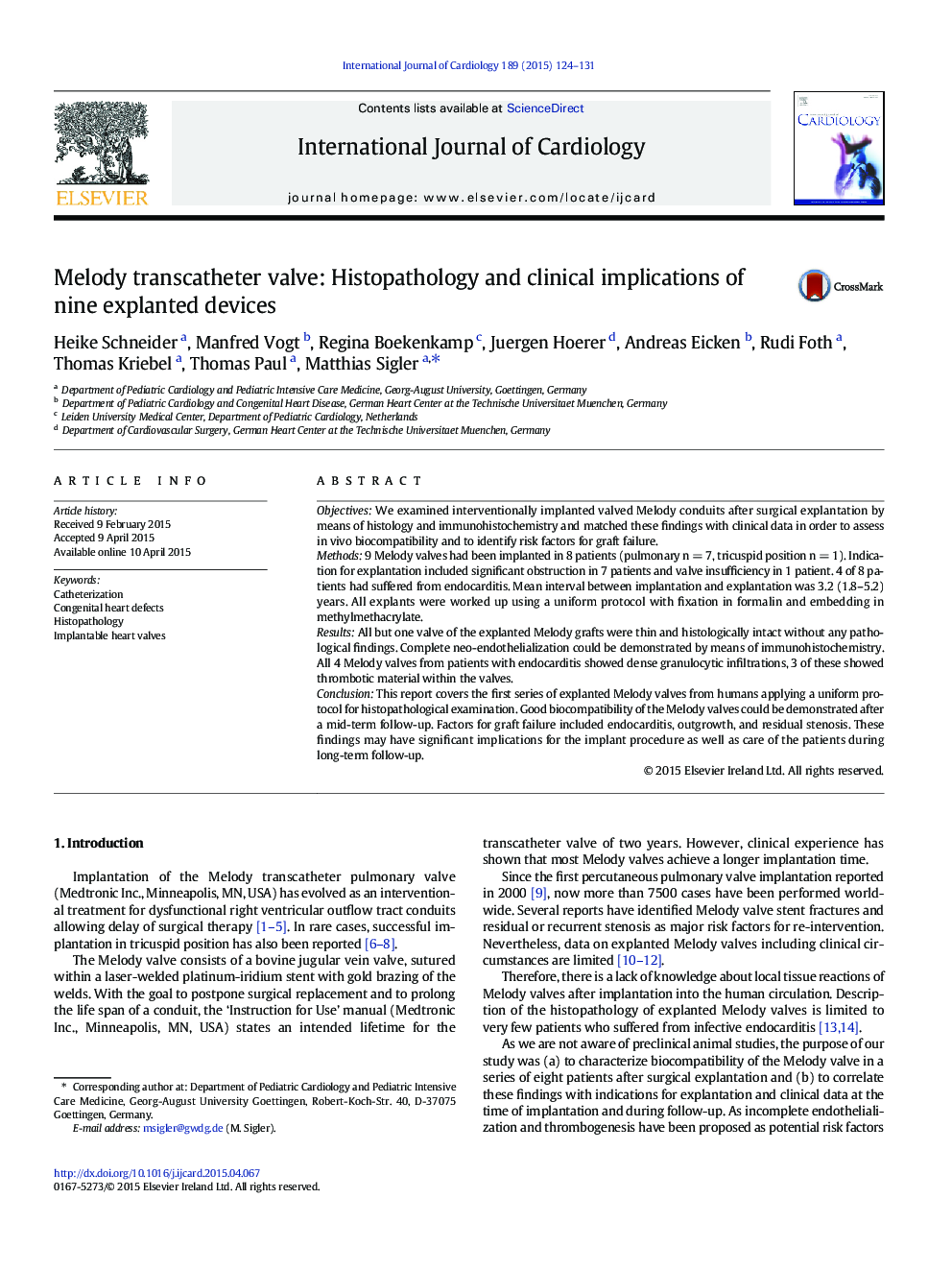| Article ID | Journal | Published Year | Pages | File Type |
|---|---|---|---|---|
| 5967098 | International Journal of Cardiology | 2015 | 8 Pages |
ObjectivesWe examined interventionally implanted valved Melody conduits after surgical explantation by means of histology and immunohistochemistry and matched these findings with clinical data in order to assess in vivo biocompatibility and to identify risk factors for graft failure.Methods9 Melody valves had been implanted in 8 patients (pulmonary n = 7, tricuspid position n = 1). Indication for explantation included significant obstruction in 7 patients and valve insufficiency in 1 patient. 4 of 8 patients had suffered from endocarditis. Mean interval between implantation and explantation was 3.2 (1.8-5.2) years. All explants were worked up using a uniform protocol with fixation in formalin and embedding in methylmethacrylate.ResultsAll but one valve of the explanted Melody grafts were thin and histologically intact without any pathological findings. Complete neo-endothelialization could be demonstrated by means of immunohistochemistry. All 4 Melody valves from patients with endocarditis showed dense granulocytic infiltrations, 3 of these showed thrombotic material within the valves.ConclusionThis report covers the first series of explanted Melody valves from humans applying a uniform protocol for histopathological examination. Good biocompatibility of the Melody valves could be demonstrated after a mid-term follow-up. Factors for graft failure included endocarditis, outgrowth, and residual stenosis. These findings may have significant implications for the implant procedure as well as care of the patients during long-term follow-up.
